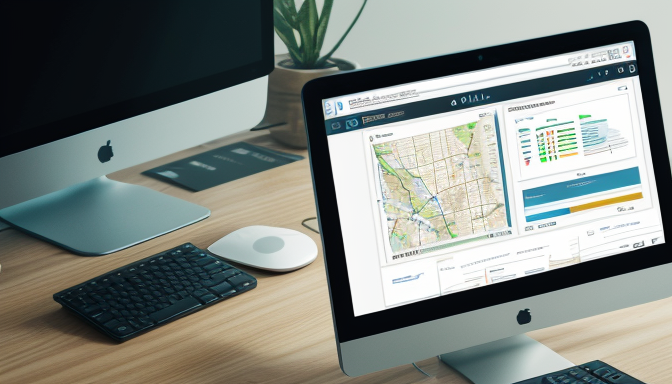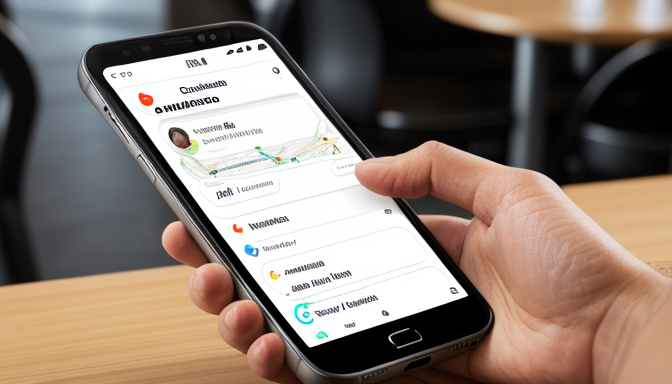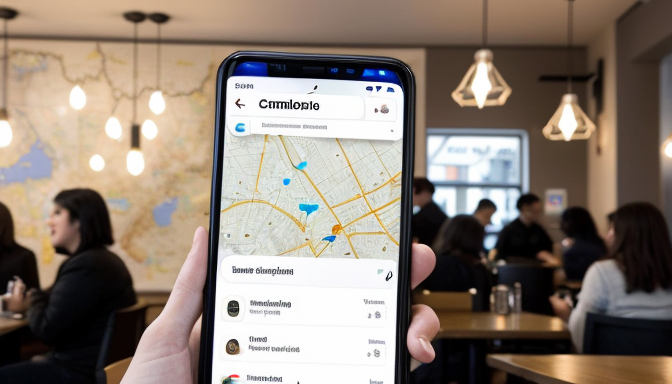
Optimize My Business Maps for Voice Search
Google maps seo, In today’s fast-paced world, voice search is becoming the go-to method for finding information. Whether you’re asking your smart speaker for directions or searching for the nearest coffee shop, voice search is changing how we interact with maps. So, how can you ? This article dives into strategies that can help you enhance your map listings, boost visibility, and engage users more effectively.
Identifying the right keywords is crucial for optimizing your maps for voice search. Think about it: when you speak, you phrase things differently than when you type. Voice searches tend to be more conversational. For instance, instead of typing “best pizza near me,” you might say, “Where can I find the best pizza around here?” This means you need to focus on long-tail keywords that reflect these natural speech patterns.
To find these keywords, start by brainstorming questions users might ask. You can use tools like Google Keyword Planner or Answer the Public to discover popular queries. Pay attention to local terms and phrases that are specific to your area. Once you’ve gathered a list, prioritize them based on relevance and search volume. This targeted approach will help you more effectively.
Properly formatting your data can significantly impact your visibility in voice search results. Think of your map listings like a well-organized bookshelf. If everything is in its place, it’s easy to find what you’re looking for. Use structured data markup to provide search engines with clear information about your business. This includes your name, address, phone number, and hours of operation.
Additionally, ensure that your website is mobile-friendly. Most voice searches happen on mobile devices, so a smooth user experience is essential. Make sure your content is concise and answers common questions directly. For example, if someone asks, “What time does your store close?” your listing should provide that information clearly and quickly. This clarity will help users find you and will also improve your chances of being featured in voice search results.
Regularly testing your map listings is essential for maintaining their effectiveness in voice search. Just like you wouldn’t drive a car without checking the oil, you shouldn’t ignore your listings. Evaluate how they perform by tracking metrics such as clicks, calls, and visits. Use tools like Google My Business Insights to see how users interact with your listings.
Don’t be afraid to make changes based on what you learn. If a particular keyword isn’t driving traffic, try a different one. If users frequently ask about your hours but can’t find the information, adjust your listing to make it more visible. Testing and refining your listings will not only enhance performance but also improve the overall user experience. Remember, optimizing maps for voice search is an ongoing process, not a one-time task.
In conclusion, by focusing on keyword selection, formatting data correctly, and consistently testing your listings, you can significantly enhance your visibility in voice search results. Embrace these strategies to and watch your engagement soar!

Select Keywords to Optimize Maps for Voice
Identifying the right keywords is crucial for optimizing your maps for voice search. Why? Because voice searches are often more conversational. People don’t just type “best pizza near me.” They might say, “What’s the best pizza place around here?” This difference in phrasing means you need to think differently about your keywords.
Start by putting yourself in the shoes of your audience. What questions are they asking? What phrases do they use? Tools like Google Keyword Planner or Answer the Public can be goldmines for this. They help you discover phrases that real people are searching for. You might find that “family-friendly restaurants” or “late-night coffee shops” are popular searches in your area.
Once you gather your keywords, it’s time to refine them. Focus on long-tail keywords. These are phrases that are typically longer and more specific. For example, instead of just “restaurants,” consider “Italian restaurants with outdoor seating.” This specificity can help you stand out in voice search results.
Here’s a quick rundown of effective keyword strategies:
- Think like a user: What would you ask if you were looking for your service?
- Use local keywords: Include your city or neighborhood in your phrases.
- Consider question-based queries: Many voice searches are framed as questions.
After selecting your keywords, incorporate them naturally into your map listings. This includes your business name, description, and even reviews. Don’t just stuff them in. Make sure they fit smoothly. Think of it as seasoning your favorite dish. Too much can ruin it, but just the right amount enhances the flavor.
Finally, keep an eye on your performance. Use tools like Google Analytics to track how well your keywords are doing. Are people finding you through voice search? If not, don’t hesitate to tweak your keywords. It’s all about trial and error.
In summary, selecting the right keywords is a vital step in optimizing your maps for voice search. By thinking like your audience, focusing on long-tail phrases, and continuously refining your strategy, you can improve your visibility. Remember, the goal is to connect with users in a way that feels natural and helpful.

Format Data to Optimize Maps for Voice
When it comes to optimizing your maps for voice search, the way you format your data is key. Think of it like setting the stage for a performance. If the setup is off, the audience won’t engage. Similarly, if your data isn’t structured properly, voice search algorithms might overlook your listings. So, how do you ensure your maps stand out in a crowded room of information? Let’s dive in!
First off, clarity is essential. Voice search users often ask questions or use phrases that are conversational. This means your data should reflect that. Instead of using technical jargon or complex terms, opt for simple, everyday language. For instance, if you’re a local pizza shop, instead of saying “best Italian cuisine,” you might want to use “best pizza near me.” It’s more relatable and aligns with how people naturally speak.
Next, you need to focus on structured data. This is like giving voice search engines a roadmap to your information. By using schema markup, you can help search engines understand what your content is about. Here’s a quick overview of what to include:
| Data Type | Description |
|---|---|
| Business Name | Your official business name, exactly as it appears. |
| Address | Complete address, including city, state, and zip code. |
| Phone Number | A local phone number, formatted correctly. |
| Operating Hours | Clearly state when you are open for business. |
With this structured data, you’re not just throwing information out there. You’re crafting a clear picture for both users and search engines. But that’s not all! You also want to ensure your information is consistent across all platforms. Imagine if your phone number is different on your website than it is on Google Maps. Confusing, right? This inconsistency can hurt your visibility in voice search.
Another important aspect is local relevance. When formatting your data, include local keywords that people might use in their voice searches. For example, if you’re located in Austin, Texas, phrases like “Austin coffee shop” can help you connect with local customers. It’s like waving a flag saying, “Hey, I’m right here!”
Lastly, don’t forget to test your listings regularly. Just like a chef tastes their dish before serving, you should check how your maps perform in voice searches. Are people finding you? Are they engaging? If not, it might be time to tweak your data formatting. Remember, the goal is to keep your maps optimized for voice search, ensuring they are always ready to shine.
In summary, formatting your data properly can significantly impact your visibility in voice search results. By focusing on clarity, structured data, consistency, local relevance, and regular testing, you’ll be well on your way to optimizing your maps for voice search.

Test Listings to Optimize Maps for Voice
When it comes to optimizing your maps for voice search, testing your listings is like taking your car for a spin before a long road trip. You want to make sure everything runs smoothly. Regular testing helps ensure that your map listings are not just sitting pretty but are actually effective. But how do you go about it?
First, you need to check how your listings appear in voice search results. This means you should use voice search features on your smartphone or smart device. Ask questions like, “Where is the nearest coffee shop?” or “Find a gas station near me.” Take note of how your business appears. Is it easy to find? Is the information accurate? If not, it’s time to roll up your sleeves and make some changes.
Next, consider the user experience. What information do users want? They typically look for:
- Name: Is your business name clear and recognizable?
- Address: Is your location listed correctly?
- Phone Number: Can users easily contact you?
- Hours of Operation: Are your hours up-to-date?
Regularly updating this information is crucial. Think of it this way: if you were looking for a restaurant and found outdated hours, you’d probably be frustrated, right? The same goes for your customers. Keeping your listings accurate is not just good practice; it’s essential for keeping customers happy.
Another key aspect of testing is to analyze your performance metrics. Use tools like Google My Business Insights. They can show you how many people are finding your listings through voice search. Look for trends. Are there certain times when more people search for your business? Is there a specific question they frequently ask? This data is gold. It can help you refine your listings further.
Finally, don’t forget to ask for feedback. Reach out to your customers and ask them how they found you. Did they use voice search? What information did they need? This feedback is invaluable. It’s like having a personal roadmap to guide you in optimizing your maps for voice search.
In summary, testing your listings is a vital part of optimizing maps for voice search. Regular checks, user experience considerations, performance metrics, and customer feedback all play a role in ensuring your listings shine. Remember, just like a well-tuned engine, your map listings need regular maintenance to keep them running smoothly in the fast-paced world of voice search.
Frequently Asked Questions
- What are the best keywords to use for optimizing maps for voice search?Choosing the right keywords is like picking the perfect ingredients for a recipe. You want to think about what people are actually saying when they search. Tools like Google Keyword Planner or Answer the Public can help you find phrases that match user intent. Look for long-tail keywords that are specific to your location and services. For example, instead of just “pizza,” try “best pizza near me” or “pizza delivery in [your city].”
- How can I format my data for voice search optimization?Data formatting is crucial! Think of it as organizing your closet; everything needs to be in the right place. Make sure your business name, address, and phone number (NAP) are consistent across all platforms. Use schema markup to help search engines understand your content better. This structured data acts like a roadmap for search engines, guiding them to your information quickly and accurately.
- Why is testing my map listings important?Imagine you’re a chef; you wouldn’t serve a dish without tasting it first, right? Testing your map listings regularly helps you ensure they’re working as intended. You can use tools like Google My Business Insights to see how users are interacting with your listings. If something isn’t performing well, it’s time to tweak it! Regular testing keeps your information fresh and relevant, making it easier for potential customers to find you.
- How do I track the outcomes of my voice search optimization efforts?Tracking outcomes is like keeping score in a game; it tells you how well you’re doing! Use analytics tools to monitor traffic, clicks, and conversions from your map listings. Google Analytics and Google My Business provide valuable insights into how users are finding and interacting with your business. By analyzing this data, you can make informed decisions to enhance your strategy further.



